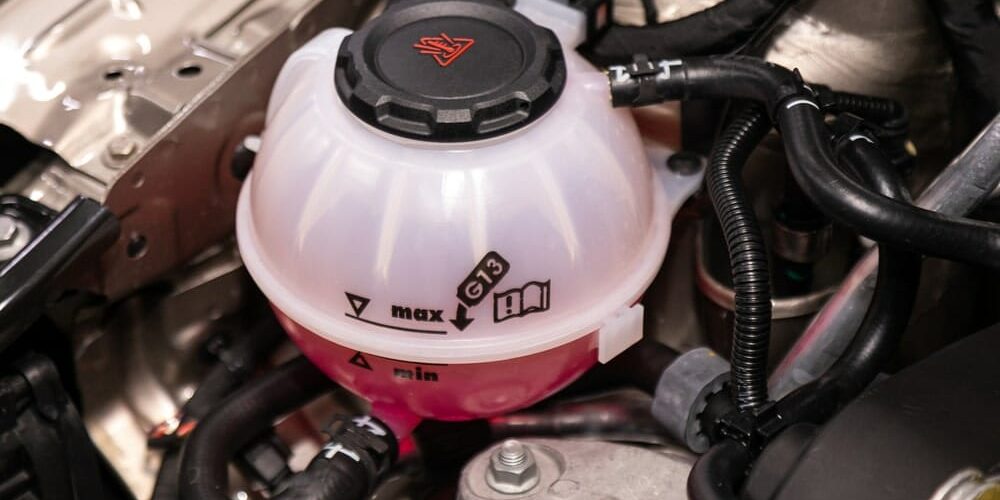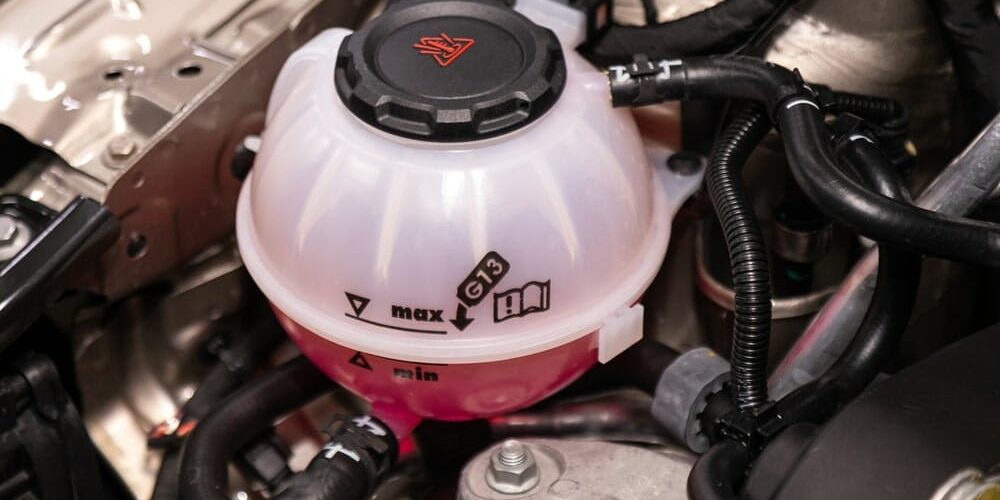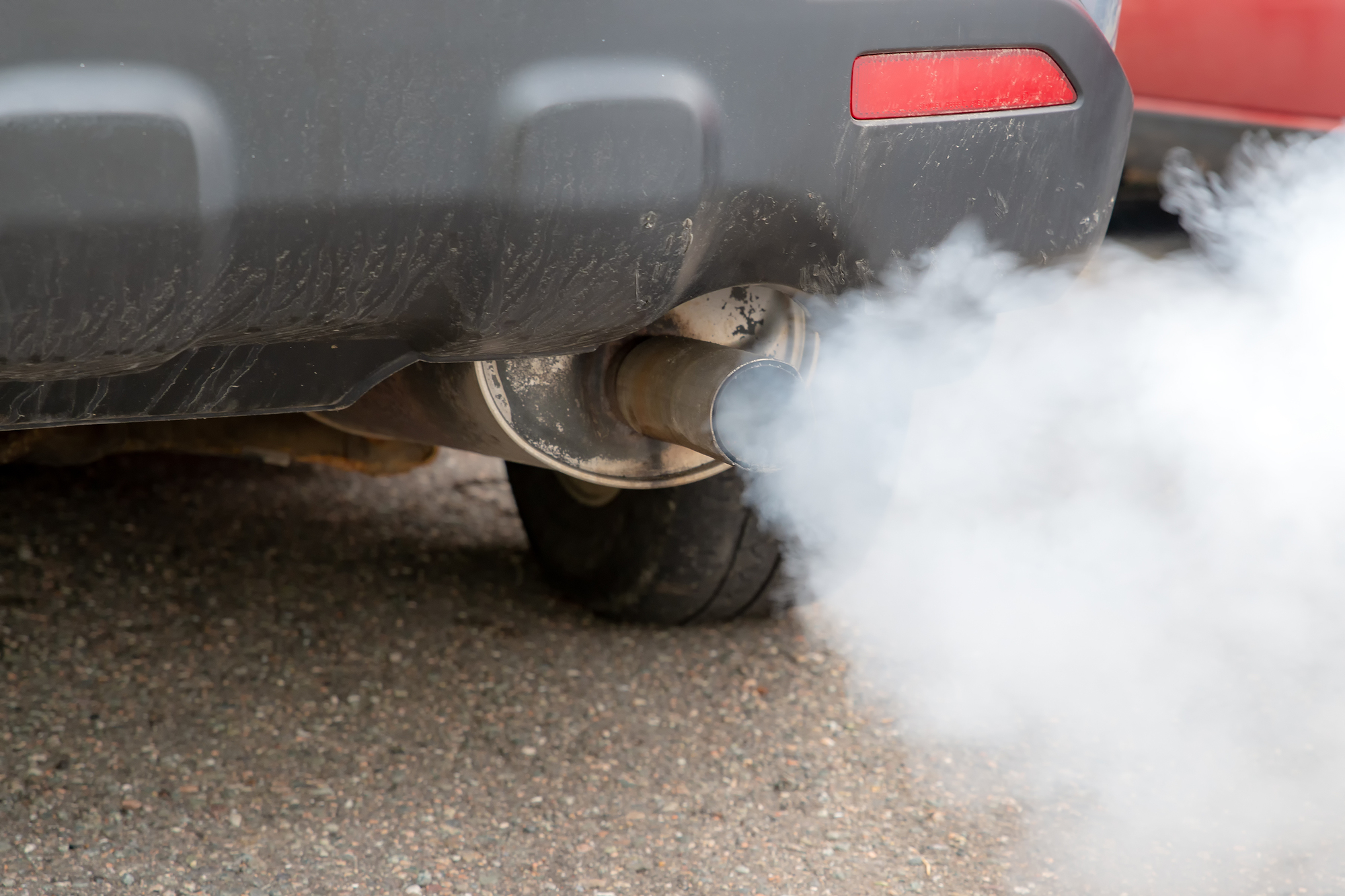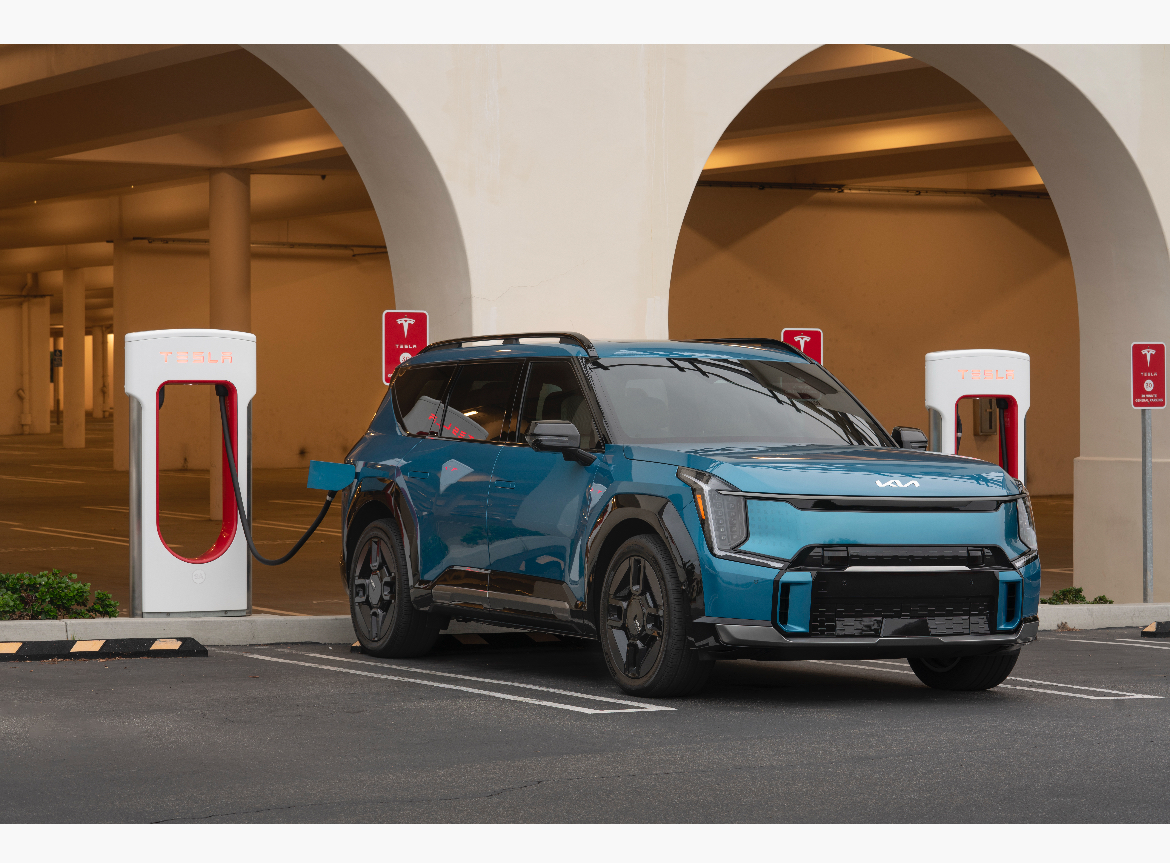How Much Coolant Does A Car Take


Introduction to Coolant
Coolant, also known as antifreeze, plays a vital role in keeping your car’s engine functioning optimally. This liquid mixture is designed to regulate engine temperature and prevent it from overheating or freezing in extreme weather conditions. As the engine runs, it produces heat that can cause significant damage without proper cooling. Coolant helps dissipate this heat efficiently and circulates throughout the engine system via a series of hoses and passages.
In addition to regulating temperature, coolant also lubricates essential components, reduces corrosion, and keeps seals and gaskets from drying out, which helps avoid leaks. A well-maintained coolant system encompasses several parts, including the radiator, water pump, thermostat, fan assembly, and heater core, all working together to keep your car cool. It’s important to note that coolant can break down over time, leaving behind deposits that can clog the system and lead to extensive repairs.
The amount of coolant required for a car may vary depending on its make and model, such as trucks or other heavy-duty vehicles that might use more than normal cars for larger systems. It’s typically recommended to fill your car with a half-water and half-coolant mixture, or according to manufacturer recommendations based on regional climatic conditions.
The origins of coolant trace back over a century, when automobiles first began making an appearance on our roads. Early engines relied solely on plain water, which quickly froze during the winter months or boiled off during excessive heat, causing permanent engine damage. The invention of antifreeze was revolutionary as it allowed automobiles year-round mobility without fear of severe weather damage affecting their performance.
Importance of Coolant for Car Engines
Coolant is a crucial component in maintaining the stability of car engines. Failure to use adequate coolant or skip its replacement can result in various engine problems, such as corrosion, overheating, and contamination. It also aids in regulating the temperature of engine components like the radiator, water pump, and cylinders effectively.
The absence of coolant in an engine can cause irreversible damage. The liquid serves as a lubricant and saves important engine parts from grinding together while transferring heat from the engine to other sections. It prolongs the life span of an automobile by preventing rust formation, keeping the cooling system well-oiled, and minimising corrosion.
It’s essential to check whether the proper ratio of coolant to water is maintained. An equal blend keeps the engine running at optimal temperatures, while particular weather conditions may require a more substantial concentration. Be mindful when beginning long car trips or during hot summer days since these can deplete your coolant faster than usual.
According to Carfax, failing to flush and replace old coolant can destroy radiators, water pumps, and clog heater cores, leading to an expensive repair bill. Thus, automobile owners must maintain their cooling systems effectively.
Factors Affecting Coolant Usage
To understand the factors affecting coolant usage in a car, refer to the section on how much coolant a car takes. Car engine size, engine type, and weather conditions are the key sub-sections to consider when calculating the appropriate coolant volume.
Car Engine Size
For the size of the engine in your vehicle, several factors affect coolant usage. Considering the volume of coolant required for circulation increases with engine size, it’s important to explore these factors.
The following table shows the maximum coolant capacity (litres) for different car engine sizes:
| Car Engine Size | Maximum Coolant Capacity (Litres) |
|---|---|
| Small | 7-8 |
| Medium | 9-10 |
| Large | 11-12 |
An engine’s overall heat output is proportional to its size, and an increase in engine size also leads to higher energy demands by car owners. Furthermore, a larger engine needs more coolant to circulate and absorb excess heat within the engine block efficiently.
To decrease unnecessary loss of coolant in bigger engines, consider installing additional supplementary cooling systems such as oil coolers or transmission coolers. Another alternative is utilising a radiator with a greater capacity for drawing heat away from the engine quicker without causing damage from overheating.
Engine Type
The classification of automobile powerplants has been a subject of debate in the automotive industry. This variation creates different coolant usage requirements for each engine type.
| Engine Type | Coolant Usage |
|---|---|
| Gasoline | Average consumption requires replacement every 2 years, or 30,000 miles. |
| Diesel | Extended replacement intervals due to robust durability are around every 4 years, or about 90,000 miles. |
In addition, electric motors that do not use internal combustion engines require little or no coolant usage. This contrasts with hybrid vehicles, which contain gasoline engines, substantially increasing their coolant needs.
Interestingly, early automobile coolant types were primarily made up of water. However, advances in chemistry introduced ethylene glycol as a more effective solution to cool engines.
Overall, understanding engine type is critical to making an informed decision on the frequency and quantity of coolant required for optimal automobile performance.
Weather Conditions
As one of the factors affecting coolant usage in vehicles, climatic conditions play a crucial role. Varying temperatures, humidity levels, and air pressure can impact engine efficiency and coolant performance. Extreme heat or cold can affect the viscosity of the coolant, leading to either thickening or thinning, which directly affects its ability to transfer heat. Additionally, higher humidity levels may cause corrosion in engine components and reduce the coolant’s lifespan.
Moreover, changes in atmospheric pressure at high altitudes can affect the boiling point of water-based coolants, which contain glycol. Coolant that boils at too-low temperatures can cause overheating, while boiling at too-high temperatures leads to diminished cooling effectiveness.
Vehicles operating in coastal areas are susceptible to faster wear-and-tear due to saltwater spray from sea winds that erodes various parts like radiators. The saltwater spray contains various elements, like sodium, that can interact with antifreeze agents present within coolants, harming your engine’s components.
In one incident reported back in 2019, a truck driver travelling cross-country encountered extreme weather conditions ranging from temperature fluctuations that peaked at over 46°C carrying through to -15°C amid storms dropping snow on roadsides, making them slick with ice. Once he arrived at his destination site, he was glad to have made it safely despite numerous vehicle incidents along the way because of his mobile refrigerated systems’ maintained condition using the right kind of antifreeze when running in those harsh weather conditions.
How Much Coolant Does a Car Need?
To determine the amount of coolant your vehicle requires, refer to our section on “How Much Coolant Does A Car Need?” with “Volume of Coolant Required, Calculating Coolant Quantity Required, and Checking the Owner’s Manual for Guidance” as solutions. Learn the benefits and proper techniques for calculating the right amount of coolant needed for your car, and refer to useful sources for guidance.
Volume of Coolant Required
To determine the right amount of coolant for your car, it is important to consider various factors such as the engine size and type, climate conditions, and the quality of the cooling system. A general rule of thumb is that a car’s cooling system should be filled with a 50/50 mix of water and antifreeze coolant to ensure optimal performance.
Following is a table that shows the approximate volume of coolant required for different engine sizes:
| Engine Size | Coolant Volume Required (Litres) |
|---|---|
| 4 Cylinders | 4-5 Litres |
| 6 Cylinders | 6-7 Litres |
| 8 Cylinders | 8-9 Litres |
It is worth noting that these are approximate values, and the actual volume of coolant required may vary based on other factors such as the location and size of the radiator, water pump capacity, and any leaks or damages in the cooling system.
While adding too much coolant can lead to overflow issues or reduce its effectiveness, not having enough could cause overheating, which will damage your engine. Therefore, it is essential to check your coolant level regularly and top it up when needed.
Interestingly enough, ancient Greeks used to use wine as an early form of automobile coolant before engine technology became more advanced in modern cars. However, this would ruin your engine nowadays due to the high sugar content in wine, which causes corrosion inside engines.
Calculating Coolant Quantity Required
To determine the correct amount of coolant for your car, it is crucial to calculate the required quantity accurately. This helps in maintaining the optimum temperature levels of the engine and preventing overheating issues. The following 4-step guide will help you calculate the quantity required:
- Identify your vehicle’s coolant capacity by checking its owner’s manual or consulting with a manufacturer’s technician.
- Determine the current level of coolant in your car by inspecting its overflow tank or radiator.
- Subtract the level identified in step two from the vehicle’s coolant capacity (step one) to determine how much additional coolant is necessary.
- Purchase enough coolant to refill your system fully, ensuring that it matches your car’s recommended type and concentration levels.
In addition to calculating the amount needed, you should also examine the condition of your current coolant, as contaminated or old fluid may exacerbate overheating problems or cause corrosion.
It is worth noting that overfilling or underfilling your vehicle’s cooling system can lead to malfunctioning, so always stick to manufacturer-recommended quantities.
According to Consumer Reports, failing to maintain an appropriate coolant level could lead to high repair costs and engine damage later on.
Checking the Owner’s Manual for Guidance
When it comes to how much coolant a car needs, consulting the owner’s manual is crucial. It provides specific instructions for your vehicle model regarding coolant type, capacity, and the correct mixtures. Following these guidelines will help keep your engine running smoothly and prevent overheating.
The owner’s manual typically specifies the recommended amount of coolant based on the size of your radiator and engine. The coolant level should be maintained between the minimum and maximum marks on the overflow tank or expansion valve. It’s essential to check this level regularly and top it off as needed to prevent damage to your engine.
Keep in mind that overfilling or mixing coolants can lead to negative consequences such as reduced heat transfer efficiency or even damage to engine components. If you have any questions or concerns, consult with a professional mechanic or dealership service centre.
Properly maintaining your car’s cooling system can help save time and money in the long run while keeping you safe on the road. Don’t forget to check other fluids, such as oil, brake fluid, and transmission fluid, as per manufacturer recommendations for optimal vehicle performance.
Once, a friend of mine decided that adding more coolant would enhance his car’s performance but ended up causing damage due to excess pressure buildup in the system. It was an expensive lesson for him that could have been avoided by strictly following the recommended guidelines.
Importance of Properly Filling Coolant
To ensure your car runs smoothly, it is crucial to properly fill the coolant. In this section, you will learn about the importance of filling coolant correctly and the consequences of not doing so. The next sub-sections, Avoiding Engine Damage, Protecting Against Corrosion, and Maximising Engine Efficiency, will explain the solutions for achieving optimal coolant levels.
Avoiding Engine Damage
Engine Protection through Proper Coolant Filling
Properly filling coolant is an important aspect of engine maintenance. Neglecting this can lead to engine damage, which could be a costly affair. Here’s how you can avoid such damage:
- Check the coolant level – Ensure that the coolant level is between the minimum and maximum levels marked on your vehicle’s coolant overflow tank.
- Check for leaks – Look for any visible signs of leakage around the coolant reservoir tank or in its vicinity.
- Use the right coolant – Make sure you use the recommended type of coolant for your vehicle as specified in the owner’s manual.
- Mix ratio – Follow the mixing ratio reasonably specified on the label of the packaged coolant while preparing it for use.
- Flush periodically – Periodically flush out old and contaminated coolant in your car’s cooling system.
It’s always best to have a professional perform a routine inspection and servicing on your car, especially if you’re unsure about how to handle certain issues related to engine cooling.
Pro Tip: Never mix different types of coolants, as doing so may cause adverse reactions that could ultimately impact engine performance.
Protecting Against Corrosion
Protecting Your Vehicle from Oxidation
To protect your vehicle from oxidation, it is essential to fill the coolant properly. Coolant is an antifreeze that circulates within the engine. When it’s mixed with water, the mixture can serve as a heat transfer medium throughout the engine system to keep it cool. In addition to this function, coolant plays another vital role: protecting against corrosion.
| Function | Preventive Action |
|---|---|
| Inhibiting corrosion and rust | Additives that provide acidic buffering and anti-foaming agents minimise mineral sediment formation by neutralising acids and keeping bubbles out of the coolant. It ameliorates electrical and electronic conductivity. |
| Preventing Cavitation Erosion | Formulated chemistries eliminate nitrites that cause wear and tear in aluminium systems due to tiny explosions (implosions). High-quality coolants have extensive filtration properties that reduce particulates that cause erosion in cavitated areas such as liners and cylinder block walls. |
Coolant has specific chemical additives that block rust formation and inhibit electrolytic reactions between different metal parts in the cooling system while increasing lubrication between moving parts. For rust prevention purposes, early-generation products employed silicates. However, new-age coolants employ organic acid technology (OAT), which is less harmful and provides effective protection against metallic deterioration.
When filling or flushing your cooling system, note down OEM guidelines regarding ratios and the timing of adding such maintenance products. Choose a manufacturer-approved coolant type when selecting replacement liquids for automotive applications for better protection against corrosion. By adhering to these suggestions, you increase your fine vehicle’s lifespan while reducing the need for costly repairs.
Maximising Engine Efficiency
Achieving Optimal Performance of Your Engine
Maintaining your engine’s performance is crucial to maximising its efficiency. One way to do so is through proper coolant filling. This ensures that your engine won’t overheat while providing enough heat for it to function correctly, thus maintaining fuel efficiency.
Coolant plays a significant role in regulating your engine’s temperature and preventing any damage that may occur due to overheating. By filling the coolant appropriately, you can avoid these potential complications, resulting in a well-maintained and energy-efficient engine.
Another vital factor that influences engine efficiency is the type of coolant used. Using high-quality coolant raises its boiling point and lowers the freezing point, which translates to better performance and protection against rust and corrosion.
Pro Tip: Regularly check your engine’s coolant levels and quality to ensure optimal performance, especially during hot summer months or cold winter seasons.
Common Mistakes to Avoid While Filling Coolant
To avoid costly engine repairs, you need to know common mistakes to avoid while filling coolant with ‘How much coolant does a car take’ as the solution. In this section, we’ll tackle Adding Water Instead of Coolant, Overfilling or Underfilling the Coolant Tank, and Using an Improper Coolant Type as sub-sections that you need to be mindful of.
Adding Water Instead of Coolant
It’s a common mistake to fill your car’s coolant system with water instead of the recommended coolant. The use of pure water in a cooling system may cause various problems, including corrosion, mineral buildup, and boilover. Coolant, on the other hand, not only helps lower temperatures but also lubricates pump seals and acts as an anti-freeze agent in cold weather.
As tempting as it may be to simply add water when low on fluid, doing so can lead to serious issues. Not only does plain water lack the additives found in standard coolants that prevent rust and scale buildup, but it also has a low boiling point and can even freeze during colder months. Moreover, tap water contains minerals that can contribute to scale deposits, leading to overheating and potential engine damage.
It’s important to remember that dilution ratios are essential for the proper function of coolants. Different concentrations are formulated for different climates and driving conditions. Before adding coolant or topping off your car’s system, make sure you’re using the recommended type and mixing it with water according to manufacturer specifications.
In 1996, a famous British television programme tested what happens if you fill an engine’s cooling system with Coca-Cola instead of coolant. The result was disastrous; the carbonated drink rapidly corroded every component in the system. This is just one example of what happens when you ignore precautions regarding your car’s upkeep, especially when it comes to fluids such as coolant!
Overfilling or Underfilling the Coolant Tank
Maintaining the Coolant Level is Vital
Proper coolant levels ensure the smooth functioning of your car’s engine. It’s essential to maintain a balanced coolant level, neither too high nor too low. Overfilling or underfilling the coolant tank can lead to significant engine damage.
| Issues | Overfilling | Underfilling |
|---|---|---|
| Damages | Gasket ruptures, overheating engines, burst hoses, and radiator leaks. | Engine breakdown, corrosion in pipes and leaks |
| Symptoms | Steam or white smoke from the exhaust pipe; leaking engines on garage floors or driveways; and low power and acceleration. | Rising temperature gauge reading in traffic/lower horsepower while driving. |
Minding the Minute Details Helps
When adding coolant fluid, ensure that you’re using more than one adequately blended product instead of one concentrated mix. Flushing the cooling system will prevent contamination from previous formulations.
Avoid these blunders by applying these tips:
- Don’t top up with water unless it’s an emergency condition.
- Use distilled or deionized water instead of hard tap water.
- Check for leaks or seepages that can cause low coolant levels.
Suggested Steps to Avoid Mishaps
- Check your owner’s manual or guidebook for explicit directions on where the coolant tank is positioned.
- Wait 30 minutes after shutting off your engine to let it cool off entirely before removing or opening any components connected to it.
- Use disposable protective gloves when managing antifreeze fluids, as they are highly toxic.
- Finally, maintain a record of how much and what kind of fluids you’ve added so you can keep track if there are any issues identified during regular maintenance checks.
Maintain your car’s coolant level at recommended levels every time you refill it – It will save you from costly engine repairs and replacement.
Using Improper Coolant Type
When filling coolant, using the wrong type can cause significant problems. It is essential to choose the proper type of coolant that is compatible with your vehicle’s engine and meets its specifications. Failure to do so can result in corrosion, engine overheating, and engine failure.
Using an incompatible coolant type can lead to various issues for your vehicle. The coolant may react with different metals inside the engine and corrode them. This reaction may also create sludge that can clog the cooling system, decreasing its efficiency. It may even decrease fuel economy and cause other mechanical damages that could have hazardous consequences.
Furthermore, using a non-compatible coolant type may harm gaskets that are exposed to high temperatures regularly. Over time, these gaskets will deteriorate irreversibly, causing leaks or cracking—which means a severe decline in performance.
In addition to these problems associated with using improper coolant types, one interesting factual account shows how it has led in some cases to disastrous scenarios like sudden vehicular malfunction while driving or smoking from underneath the hood which leads directly to a more costly repair if mistakenly filled with improper coolants. Therefore, car owners must confirm their need for new fluids before buying any new coolant, and they should always consult manuals for instructions on such tasks!
How Much Coolant Does A Car Take – Conclusion: Understanding Proper Coolant Maintenance
Properly maintaining a car’s coolant is crucial for long-term engine health. This includes understanding the appropriate amount of coolant your car requires. It’s essential to know that the amount of coolant your car takes will vary depending on the vehicle’s make and model. Every owner’s manual should provide specific details on the coolant capacity, type, and mixture recommended for your car. Ensuring you follow these instructions will guarantee the optimum performance of your engine and prevent overheating, leading to costly repairs.
Additionally, ensure that you are using the right type of coolant for your car. Mixing different types can cause significant damage to your engine as it affects the chemical balance in the cooling system. You must replace the coolant according to recommendations by checking manufacturer guidelines or visiting a professional mechanic who can perform this service for you.
It is important to understand how crucial proper maintenance is in preventing significant engine damage caused by inadequate or low-quality efforts towards maintaining a vehicle’s cooling system properly.
In prior times, many people may not have fully comprehended the importance of adequate coolant maintenance or even considered an automobile requiring it at all. However, advancements in modern technology mean that self-care and proper education remain vital in ensuring automobile longevity while preventing substantial repair costs; understanding and implementing the basic requisite skill sets for automobiles equals more mileage, fewer problems, and lower overall risk.
How Much Coolant Does A Car Take – Frequently Asked Questions
1. How much coolant does my car need?
The amount of coolant your car needs depends on the make and model of your vehicle. Your owner’s manual should provide information on the exact amount needed.
2. Can I use any type of coolant in my car?
No, it’s important to use the type of coolant recommended by the manufacturer of your car. Using the wrong type of coolant could cause damage to your engine.
3. How often do I need to check my car’s coolant level?
You should check your car’s coolant level at least once a month, or more often if you’re experiencing any problems with your engine’s temperature or cooling system.
4. How do I check my car’s coolant level?
First, make sure your engine is cool. Then, locate your car’s coolant reservoir and check the level against the markings on the side of the reservoir.
5. Can I add water to my car’s coolant reservoir?
In an emergency, you can add water to your car’s coolant reservoir. However, it’s important to have your system flushed and refilled with the proper coolant as soon as possible.
6. What should I do if my car is overheating?
If your car’s temperature gauge is showing that the engine is overheating, pull over safely and turn off the engine. Wait for the engine to cool down, and then check the coolant level in your car. If the level is low, add more coolant. If the problem persists, it’s important to have your car inspected by a mechanic.










